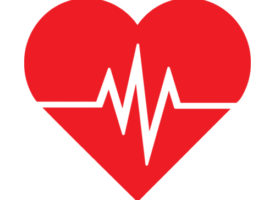The human heart is a pump. Granted, it’s an incredibly complex organ, but its primary purpose, like any pump, is to transfer and deliver fluids. Many cardiovascular diseases are due to malfunctions in the “pipes,” the arteries and veins that carry the blood pumped by the heart. However, there is one condition that is clearly a pump problem: congestive heart failure (CHF). The heart muscle—damaged by a heart attack, chronic hypertension, coronary artery disease, infection, drugs, or toxins—is unable to pump enough nutrient- and oxygen-rich blood to meet the body’s requirements.
CHF may go unnoticed in its early stages, as the weakened heart compensates by enlarging and thickening so it can beat faster and more strongly. But like any overworked muscle, it can’t keep up indefinitely, and fatigue, shortness of breath, edema (fluid retention), and other symptoms become evident. Conventional physicians use prescription drugs to reduce the heart’s workload, but this doesn’t address the real problem, which is that the heart muscle is simply running out of steam.
What patients also need are natural therapies for heart failure that energize the failing heart muscle—therapies that we’ve been using at the Whitaker Wellness Institute for decades.
Reignite Cardiac Energy
Adenosine triphosphate (ATP) is the energy that fuels our cells, and myocardial (heart muscle) cells are voracious consumers of ATP. Therefore, supplying the body with nutrients that engender ATP production should be the first order of business.
To that end, every CHF patient at Whitaker Wellness is prescribed large doses of coenzyme Q10 (CoQ10), L-carnitine, magnesium, and ribose. All these supplements have been independently shown to improve cardiac reserve, exercise tolerance, and ejection fraction (a measure of the heart’s pumping efficiency) in patients with heart failure. But when used in combination, these natural therapies for heart failure are particularly effective.
I had a patient with such severe CHF that he was told he would require a heart transplant. After I treated him with high doses of CoQ10, L-carnitine, and magnesium (ribose wasn’t available as a supplement back then), he recovered completely. Now, here’s the interesting part. The five-year survival rate of patients with severe CHF is 50 percent, and for people as sick as this guy was, it’s far worse. Well, I first saw this patient more than 25 years ago, and he is still doing well!
This demonstrates how effective these ATP-boosting supplements are. Yet in my 40-plus years of practicing medicine, I’ve yet to see a patient with CHF whose physician had suggested them. No wonder approximately 287,000 Americans die of CHF every year.
Other Nutrients for Heart Failure
We also recommend a broad spectrum of other nutrients for heart failure. Vitamin D deficiency, for example, was shown in a landmark study to be highly prevalent in CHF—and supplemental vitamin D reduced the death rate in these patients.
People with CHF are also often low in a wide range of water-soluble nutrients. One reason is because fluid overload is a characteristic of CHF, and diuretic drugs are often necessary. But while these drugs may be helpful, vitamins and minerals are lost along with excess fluids. In a study of CHF patients conducted a few years ago, researchers linked low levels of vitamin C with elevated C-reactive protein (a marker of inflammation), worsening heart failure, and higher death rates. Beneficial supplements also include selenium, vitamin E, and other antioxidants; folic acid, thiamine, and additional B-complex vitamins; and fish oil.
Can Heart Failure Be Reversed?
Perhaps the most exciting treatment for CHF is stem cell therapy. This cutting-edge therapy has the potential of actually replacing damaged cardiac muscle with new tissue. The prestigious medical journal The Lancet reported results of a small study involving patients with CHF who were treated with cardiac stem cells, collected from each patient during surgery, purified, and later infused into their damaged hearts. Following treatment, ejection fraction increased by 8 percentage points, and MRIs revealed a 30 percent decrease in dead heart muscle tissue after a year. Study participants also had notable improvements in activity level and quality of life.
At Whitaker Wellness we offer another natural therapy for heart disease that also increases levels of circulating stem cells. Enhanced external counterpulsation (EECP) is a noninvasive treatment that dramatically increases blood flow to the heart and throughout the body. Used primarily for angina and coronary artery disease, it has also been shown to reduce the heart’s workload and improve exercise capacity and oxygen utilization in patients with CHF.
EECP also raises levels of circulating endothelial progenitor cells (stem cells from the bone marrow that repair the endothelium, the all-important lining of the arteries). Regenerative stem cells not only seek out and stimulate repair of damaged areas but also proliferate and thus deliver benefits after the treatment period ends. I am not suggesting that EECP is a replacement for stem cell therapy, but given the scarcity of effective conventional therapies and the seriousness of CHF, appropriate use of EECP is often very beneficial.
Natural Therapies for Heart Failure Recap
ATP boosters for CHF, taken daily in divided doses, are: coenzyme Q10 200–600 mg, L-carnitine 1,000 mg, magnesium 500–1,000 mg, and ribose 10–15 g. I also recommend taking a high-potency multivitamin, extra vitamin D, and at least 1,000 mg (DHA/EPA) of fish oil daily.
To learn more about receiving stem cell therapy, EECP, and the other natural therapies for heart failure at Whitaker Wellness, call (866) 944-8253.


